From towering mountain peaks to vast desert landscapes and lush coastal forests, the United States is home to some of the most breathtaking national parks in the world.
These protected areas offer a chance to connect with nature, explore unique ecosystems, and experience the country’s incredible geographic diversity.
Whether you’re planning your first visit or looking to discover a new favorite spot, this guide will take you through 20 of the best national parks to visit across the U.S. – each with its own unforgettable charm.
To share those unforgettable moments instantly, consider using an iRoamly USA travel eSIM with fast speeds and flexible packages to keep you connected wherever you roam.
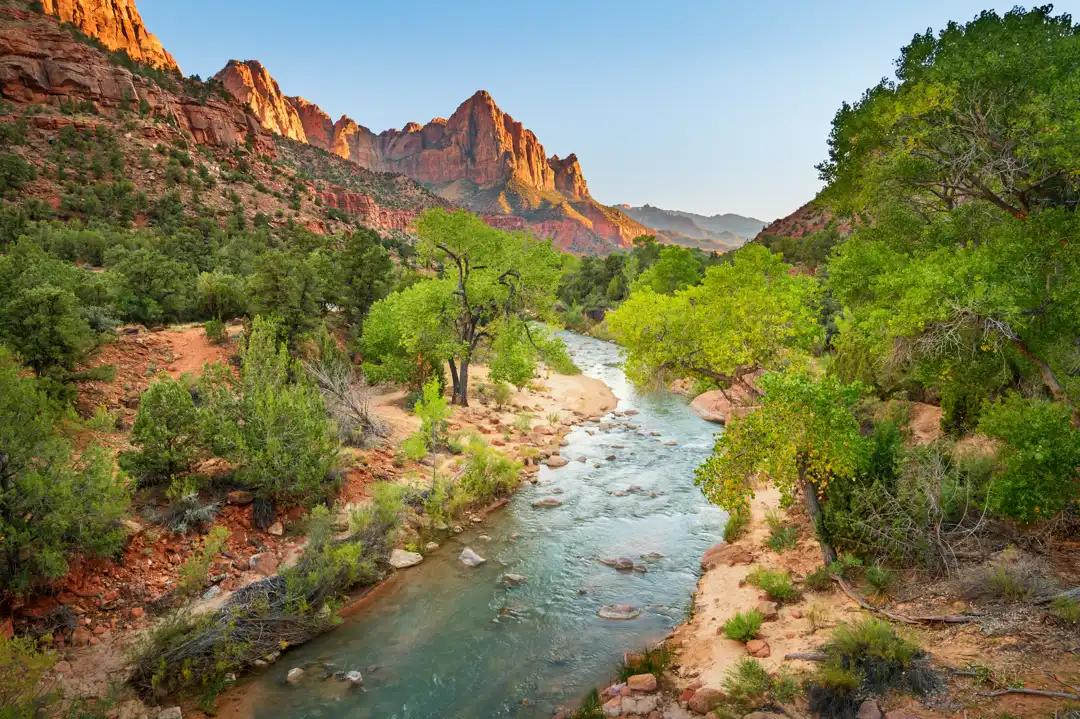
The Best 20 National Parks to Visit in the US
1. Yellowstone National Park
Location: Wyoming, Montana and Idaho
A visit to Yellowstone isn’t exactly off the beaten path since it’s one of the world’s first national parks. It’s also one of my favorite places to visit in the USA. It’s world-renown for its geothermal areas — particularly Old Faithful, a geyser that seems to erupt on schedule.
The park is home to an incredible diversity of wildlife and landscapes. For smaller crowds, visit in late spring or early fall. Be sure to see the Grand Prismatic Spring and Yellowstone Lake.
Tips: Keep your distance from all wildlife and follow all park guidelines to ensure both your safety and theirs.
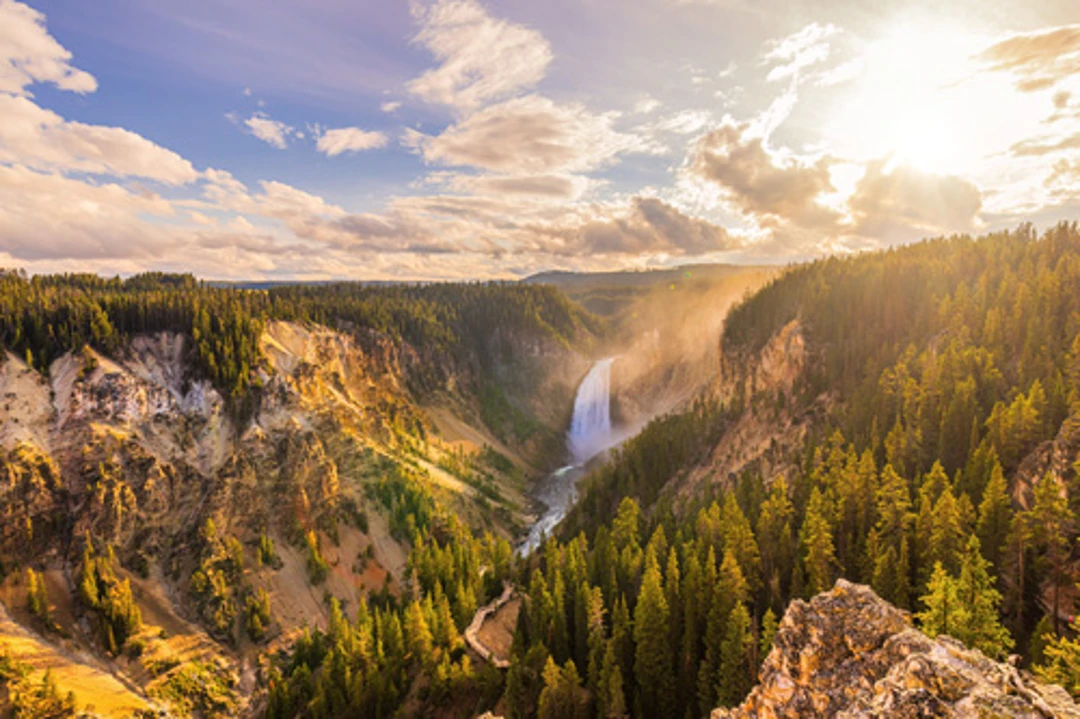
2. Grand Canyon National Park
Location: Arizona
The Grand Canyon National Park is arguably one of the top USA travel destinations and the most famous natural attraction in the country.
Stretching across northern Arizona, it measures 277 miles long, up to 18 miles wide, and more than a mile deep.
The park’s multicolored rock layers reflect Earth’s geological history; the bright red, orange, and brown colors against the deep blue sky are simply breathtaking.
Spring and autumn are the best seasons to beat the heat in the summer months. Don’t miss the Bright Angel Trail or the Desert View Watchtower for epic views.
Tips: Always carry plenty of water, especially if you’re hiking in the hotter months.
3. Yosemite National Park
Location: California
Yosemite’s monumental granite cliffs, tumbling waterfalls, and stands of giant sequoias all impress. If you love adventure or the outdoors, Yosemite is an ideal destination for you.
Try to come in late spring or early fall when the waterfalls are at their peak and the weather is more enjoyable. Don’t miss stalwarts like El Capitan and Half Dome.
Tips: Reservations are required during peak seasons, so plan ahead to secure your spot in the park.
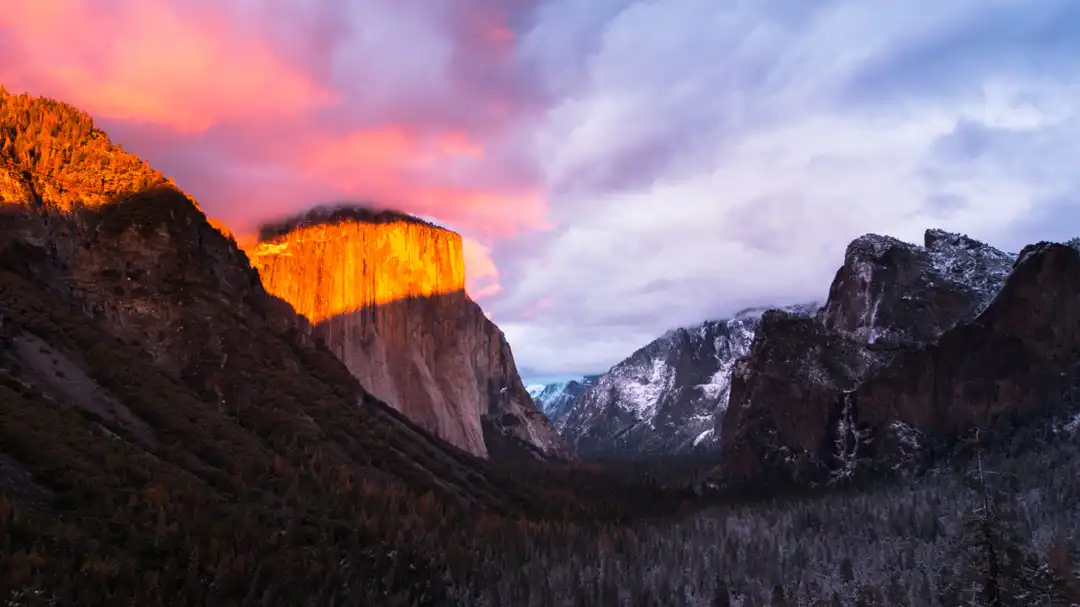
4. Zion National Park
Location: Utah
Zion is famous for its red rock canyons and is home to some of the best hikes in the nation — including the strenuous trail to Angels Landing.
Visit in the spring or fall for the most pleasant weather. The Narrows (a gorgeous slot canyon) and the picturesque Zion-Mount Carmel Highway are must-visits.
Tips: Start early in the day to beat the crowds on popular trails during peak seasons.
5. Glacier National Park
Location: Montana
Home to impressive glaciers, alpine lakes, and more than 700 hiking trails, Glacier National Park is a mecca for outdoor lovers.
It’s best to visit in late June through mid-September, when all park roads and services are accessible. The Going-to-the-Sun Road provides incredible vistas and is a bucket-list experience.
Tips: Weather can change quickly in the mountains, so bring layers and be prepared for sudden shifts.
6. Acadia National Park
Location: Maine
Acadia is the world’s second most beautiful national park (after Fiordland, New Zealand). It offers coastal views, crashing waves, rugged cliffs, and plenty of outdoor activities in a smallish space.
Visit in early fall for cool temperatures and bright foliage. Cadillac Mountain and the Park Loop Road are two must-sees.
Tips: Sunrise at Cadillac Mountain is a magical experience, so set your alarm and bring a camera.
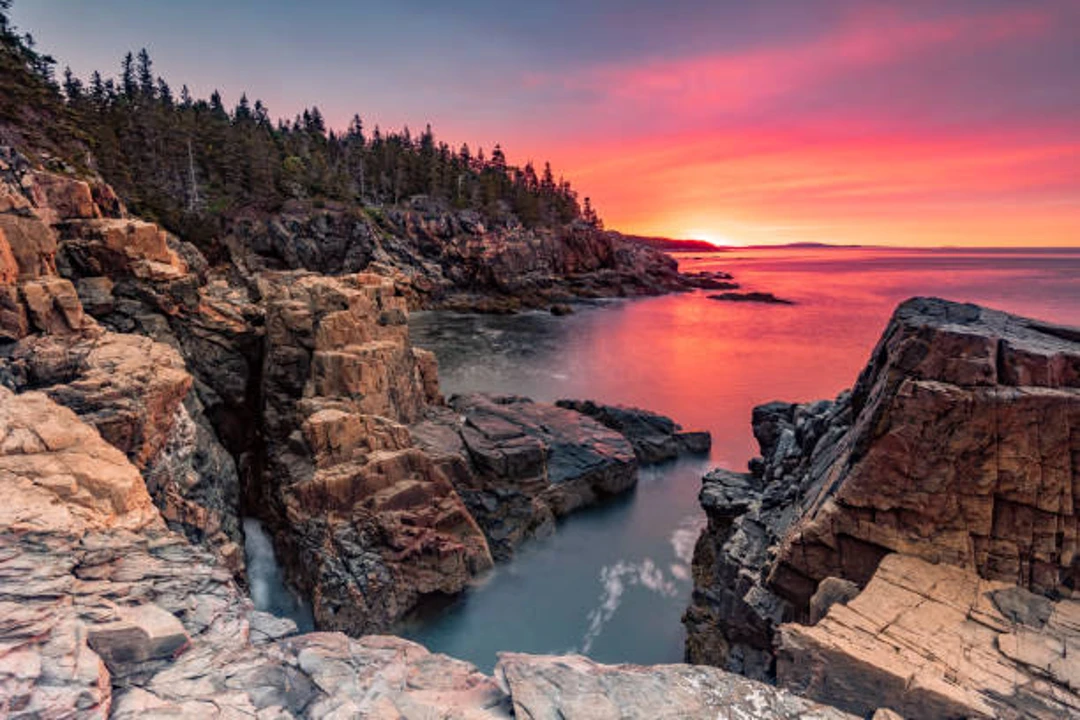
7. Bryce Canyon National Park
Location: Utah
Known for its weird and wonderful landscape of hoodoos and red rock formations, Bryce Canyon is a must-see in Utah.
For smaller crowds and more temperate weather, plan your visit in the spring or fall. Bryce Amphitheater and Sunrise Point are two spots that can’t be missed.
Tips: At higher elevations, temperatures can vary greatly, so pack layers for your trip.
8. Great Smoky Mountains National Park
Location: Tennessee and North Carolina
Known for their misty mountains and wide range of plant and animal species, the Great Smoky Mountains offer wildflower blooms in mid-spring and stunning fall foliage in late October. Both Cades Cove and Clingmans Dome have the best views and opportunities for wildlife observation.
Tips: Arrive early to popular spots to avoid the biggest crowds and enjoy a more peaceful experience.
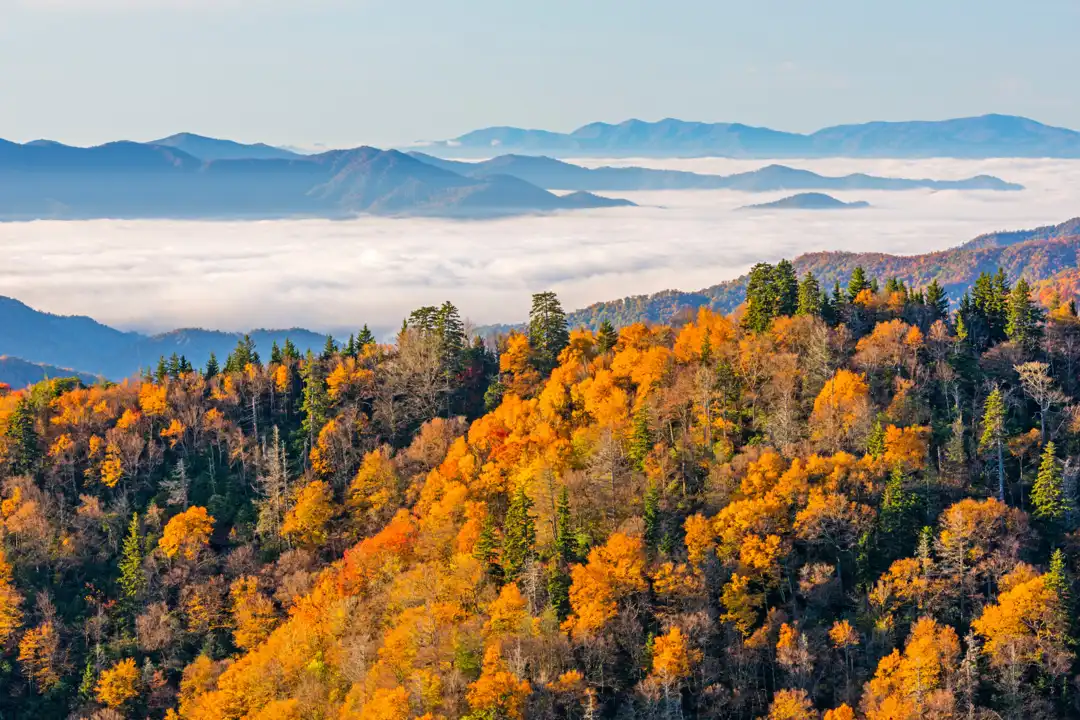
9. Rocky Mountain National Park
Location: Colorado
Rocking Mountain National Park is perfect for some high-altitude hiking & lakes swimming, and the endless mountain views are just stunning. Late June to September is the best time to visit as all the roads and trails are open. Bear Lake and Trail Ridge Road are must-sees, for sure.
Tips: Altitude affects everyone differently, so acclimate gradually and pace yourself on hikes.
10. Everglades National Park
Location: Florida
Home to a distinct wetland ecosystem, the Everglades is full of alligators, manatees, and lots of different birds.
Winter is the ideal time to enjoy all the wildlife, as the weather is milder and there are fewer mosquitoes. Enjoy a boat tour through the mangroves and don’t miss the Shark Valley Visitor Center for good wildlife-watching options.
Tips: Bring insect repellent and prepare for humid conditions, even in winter.
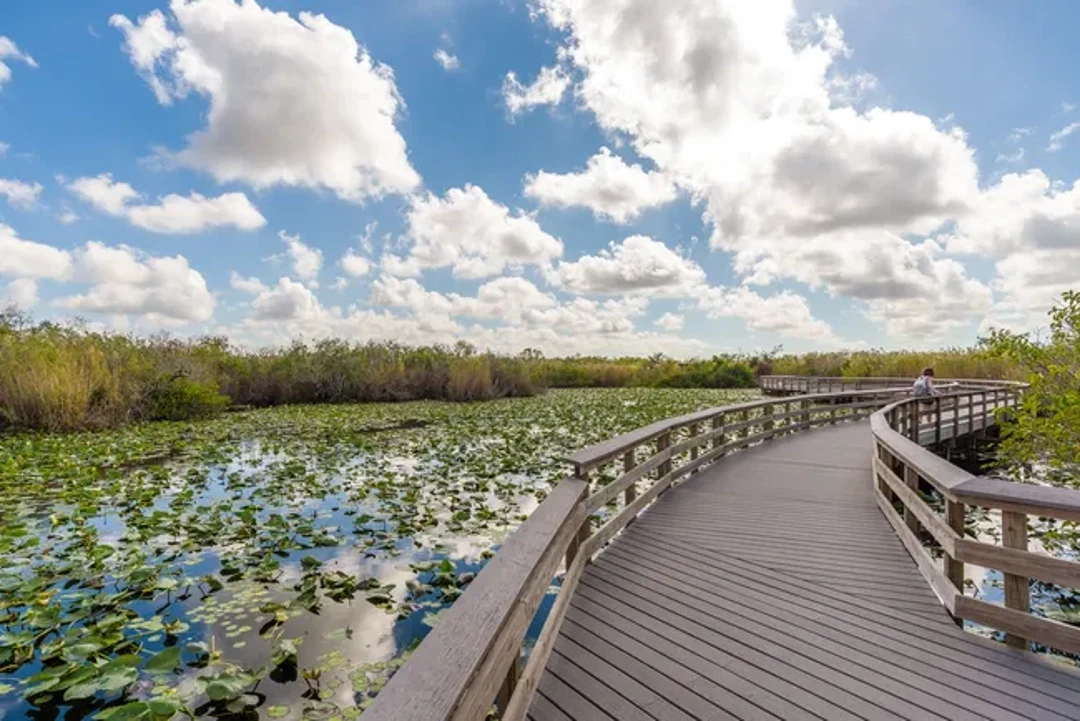
11. Joshua Tree National Park
Location: California
Joshua Tree National Park isa surreal land filled with alien-looking rock formations as well as, of course, the twisted Joshua trees that give the park its name. This desert playground is ideal for stargazing and rock climbing.
The park is best visited in spring and autumn when the weather is most enjoyable. Don’t skip the Hidden Valley and Skull Rock areas — they offer stunning landscapes.
Tips: Bring plenty of water and sunscreen to stay safe under the desert sun.
12. Olympic National Park
Location: Washington.
Home to everything from rainforests and glacier-capped peaks to a wild coastline, and the permutations seem endless. It’s amazing how many climates and ecosystems and “worlds” you can see in one place.
The best weather is from late spring to early fall. And if you want absolutely stunning views, head to the Hoh Rain Forest or Hurricane Ridge.
Tips: Pack layers as weather conditions can change quickly, especially in the mountains.
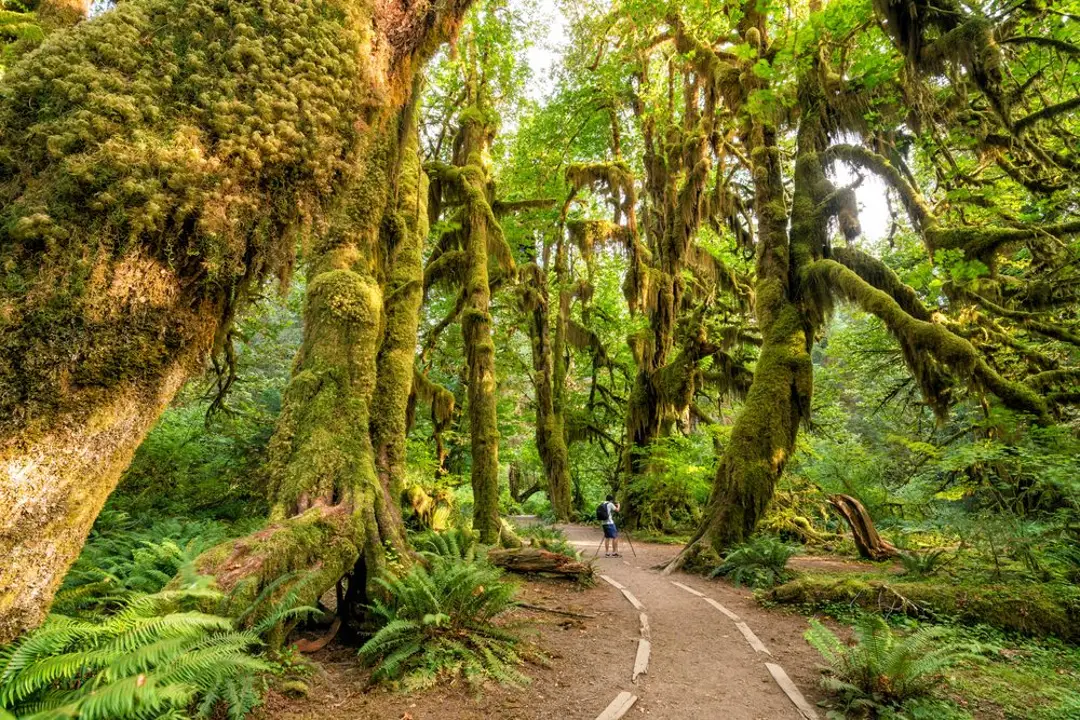
13. Arches National Park
Location: Utah
With over 2,000 natural sandstone arches, the landscape of Arches National Park is truly impressive and one-of-a-kind. As such, it’s a photographer’s and nature-lover’s paradise.
Late spring and early fall are the best times to visit when the temperatures are pleasant. Don’t miss the Delicate Arch or the Devils Garden Trail.
Tips: Early morning or late afternoon visits offer cooler temperatures and softer lighting for photos.
14. Mount Rainier National Park
Location: Washington
Bookended by the regal volcano for which it is named, Mount Rainier National Park is nothing short of breathtakingly stunning. This is the spot on the list where you can see the wildflowers and nod approvingly at all the beauty that’s out there.
Summer, and July and August in particular, are the peak season, when the hiking trails are awash in colorful blooms. And both the Paradise and Sunrise areas are incredibly beautiful, so make sure to hit them up.
Tips: Always check the weather forecast as conditions can change rapidly in the mountains.
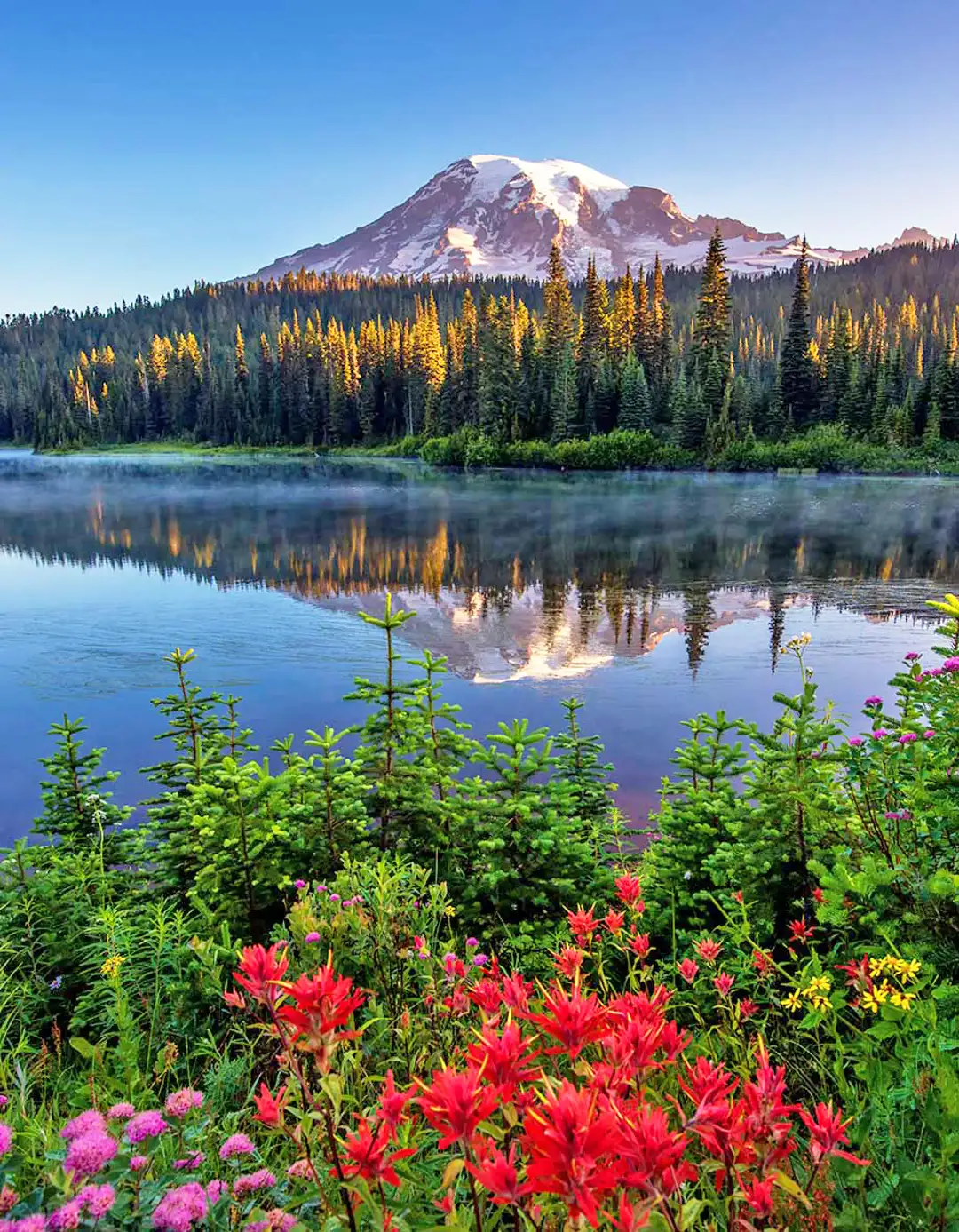
15. Sequoia & Kings Canyon National Parks
Location: California
This pair of linked parks is home to the largest trees on the planet, the Giant Sequoias with the venerable General Sherman Tree the most famous of them all. It’s a peaceful place to get in tune with nature.
Summer and early fall are the best times to come here to hike without shivering. My jaw dropped when I drove through the Giant Forest and the Kings Canyon Scenic Byway.
Tips: The parks are large, so allocate a full day or two to explore both areas fully.
16. Death Valley National Park
Location: California Nevada
Death Valley National Park is a stunning desert landscape stretching across California and Nevada. It is extremely hot, one of the hottest places on the entire planet.
This park is home to amazing natural wonders such as Badwater Basin (the lowest point in North America) and Dante’s View (which offers a great panoramic view of the desert).
In the surrounding area, visitors can also explore some amazing sand dunes, salt flats, and colorful canyons.
Tips: Carry extra water, and don’t forget a hat to protect yourself from the harsh sun.
17. Haleakalā National Park
Location: Hawaii.
Featuring an awe-inspiring mixture of volcanic geology, tropical jungle, and unforgettable sunrise panoramas from the top, Haleakalā National Park is a legendary destination for travelers and nature enthusiasts.
As beautiful as the summit is during sunrise, the best time to see it is either spring or autumn (to miss the crowds). Don’t miss hiking the Sliding Sands Trail to get up close with the unusual landscape.
Tips: Pre-book a reservation to catch the sunrise at the summit, as slots can fill up quickly.
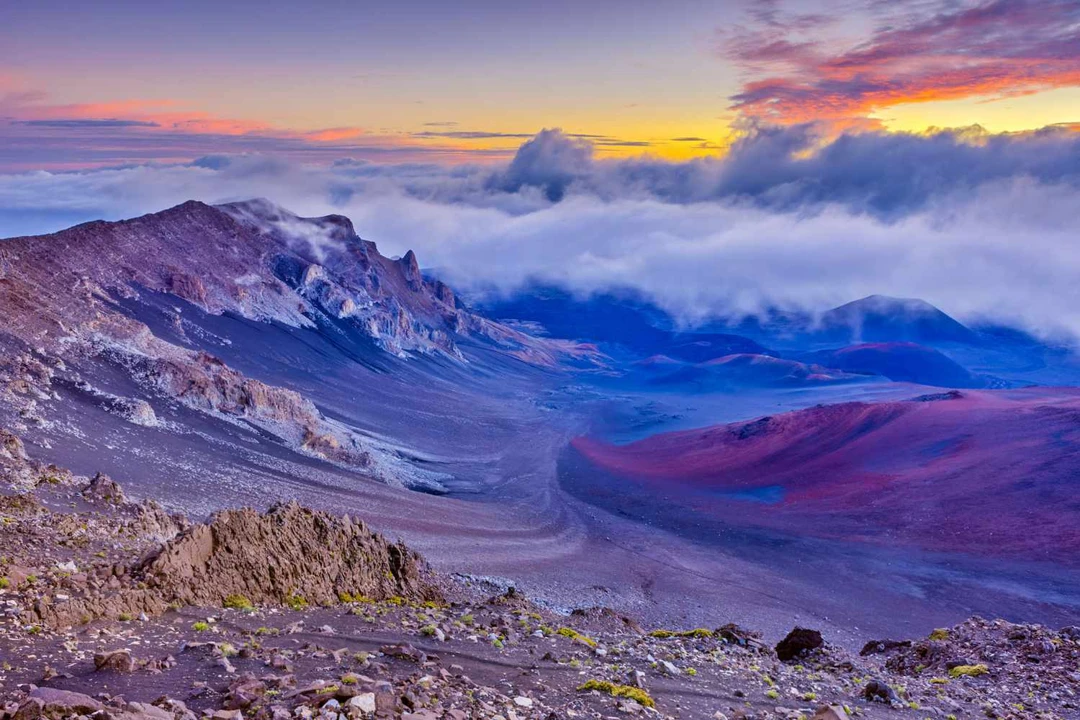
18. Shenandoah National Park
Location: Virginia
Shenandoah National Park is all about scenic drives, waterfalls, and views atop the Blue Ridge Mountains. It’s super crowded during the autumn foliage season.
The best time to visit the park is late spring or early fall. The best views are above the tree line, found either on Skyline Drive or at Old Rag Mountain.
Tips: Check for road closures or conditions, especially during winter months, when snow can make travel difficult.
19. Custer State Park
Location: South Dakota
Custer State Park is a gateway to the beautiful Black Hills and one of the best places to see herds of bison running free. If you’re a nature lover or simply enjoy a good scenic drive, this is your park.
The best time to go is during the summer and fall to make sure you see the bison up and about. Don’t miss the drive around the Wildlife Loop and a hike to Sylvan Lake.
Tips: Keep a safe distance from bison and always stay inside your vehicle when observing these majestic creatures.
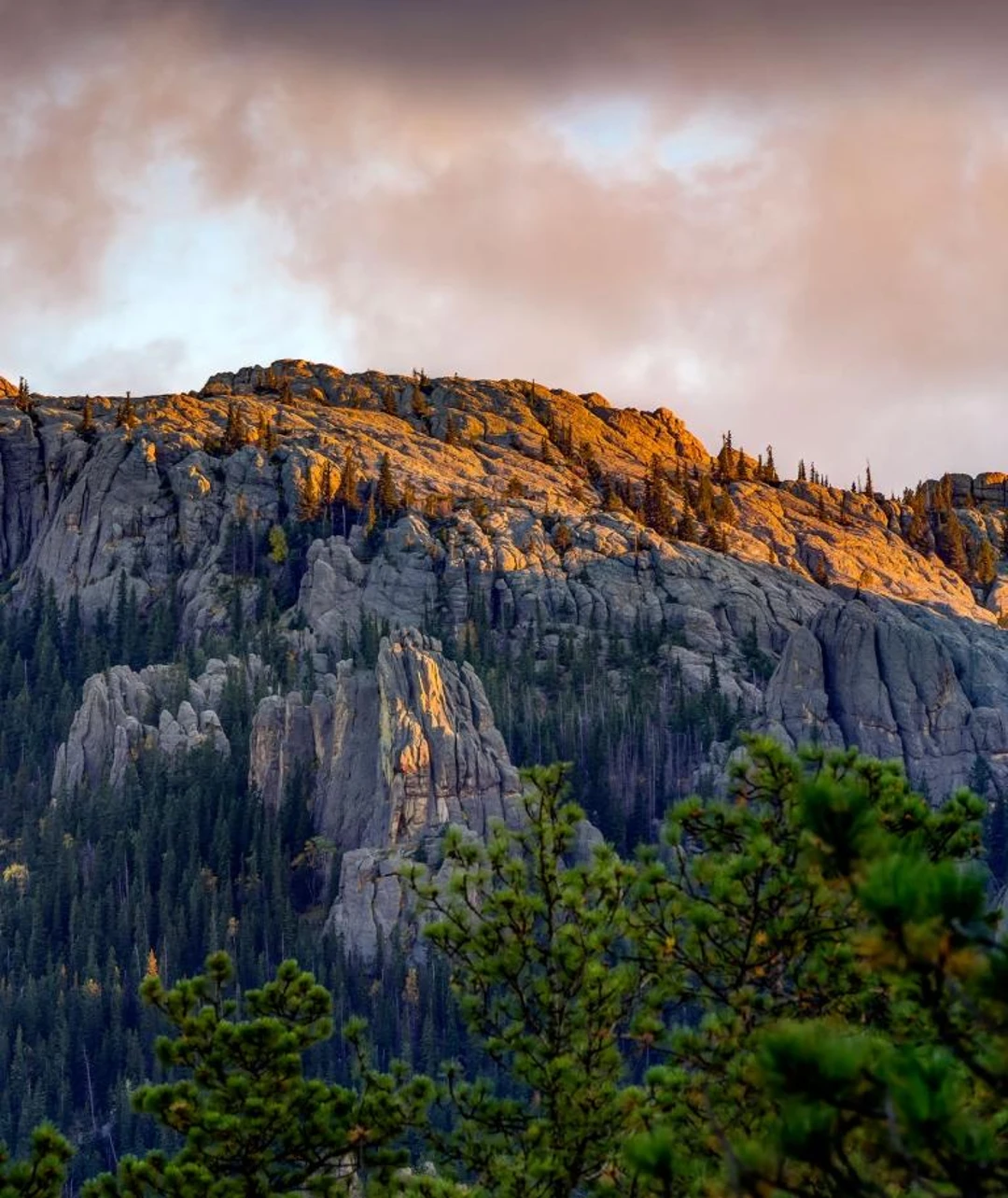
20. Channel Islands National Park
Location: California
Channel Islands National Park is a great, off-the-beaten-path destination with its remote islands, craggy cliffs, and tons of marine life. It’s the best spot for kayaking, snorkeling, or just relaxing and taking in the scenery.
The weather is spectacular in the fall, so it’s a great time to go. Be sure to head out to Anacapa Island and see the view of the lighthouse.
Tips: Plan your trip carefully as access to the islands requires a ferry or boat ride.
Things to Consider When Visiting US National Parks
Picking the right season to go can make all the difference when visiting a national park. As a general rule, spring and fall (when the weather is cooler and there are fewer people) offer some of the best climates in the USA for outdoor activities.
That said, winter brings crisp, snowy views to places like Glacier and Yosemite while, and in the summer, the high country in open for endless exploration.
But do your research for each individual park. They are not all created equally when it comes to when to go. And when it comes to safety, it’s all about taking a few easy precautions. Let someone know where you’ll be.
Follow the trails so you don’t get lost. Bring plenty of water with you (and remember that you’ll need a lot more if you’re hiking in a warmer location or climbing to a higher altitude, as you get with Rocky Mountain National Park or Haleakalā in Hawaii).
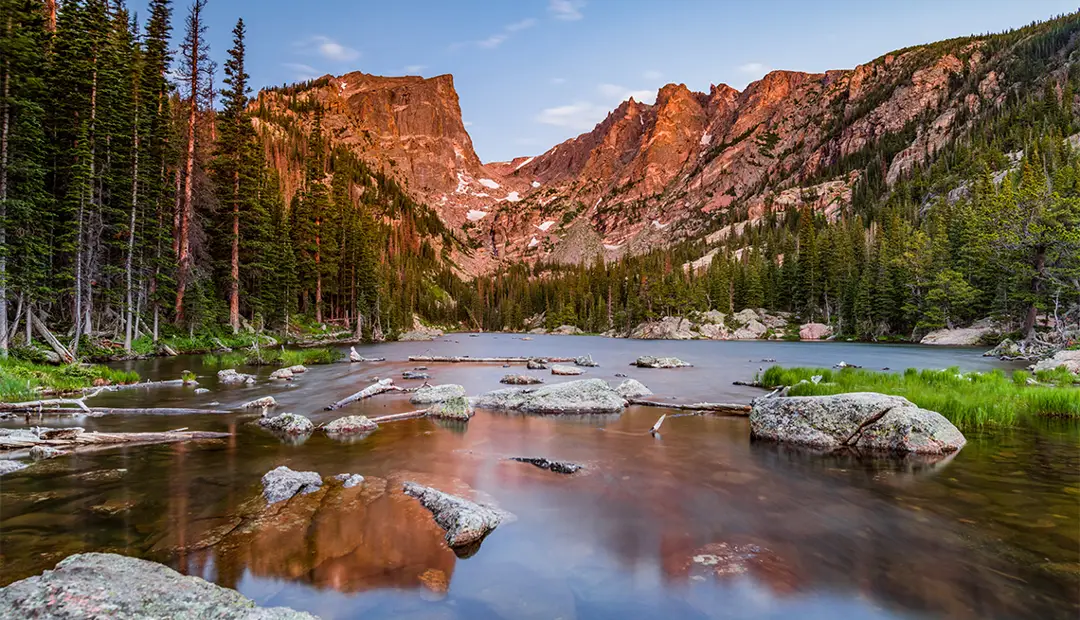
Lastly, remember that many of these parks are full of large animals — always stay at a safe distance and avoid feeding them.
It’s important to travel sustainably and help protect the beauty of the parks for future generations. Bring your own reusable water bottle and utensils to use during your visit to prevent waste, and adhere to “Leave No Trace” by keeping nature wild.
Also, consider taking shuttles when possible to reduce the number of cars on the road and limit pollution. Every little bit helps, so that these landscapes stay as wild for the next generation of adventurers as they are for you.
FAQ
1. Are pets allowed in national parks?
Most parks allow pets, but the type of animal and where they can go varies by park. There are always restrictions, especially in the backcountry to protect wildlife and your pet. As always, know the regulations and pack it out.
2. How do I stay safe from wildlife in national parks?
To ensure your safety, always maintain a respectful distance from wildlife. Never feed any animals. If you want a close-up photo, use a zoom lens. Simply observing the rules and being aware of your environment will keep you, and the wildlife, safe.
3. Can you camp anywhere in national parks?
Not all areas of the national park are accessible by camping, but a lot of it is. Most have front- and backcountry camping. The most popular locations fill up quickly, so be sure to reserve your spot in advance. Make sure to always act and camp responsibly so that other, too, can enjoy the beauty of these parks.
Conclusion
Visiting the United States’ national parks is like peeking behind the curtain of nature’s greatest secrets. Each one has its own tale to tell, with landscapes, wildlife, and activities unique to its pages.
Whether you’re after Yellowstone’s geysers, the Rockies’ towering summits, or the tranquil waters of the Everglades, you’ll find it all here. Just be sure, while exploring these awe-inspiring places, to keep your footprint small and protect these lands for those who are yet to come.
So grab your gear, get out there, and create some memories at the best that America’s nature has to offer.
